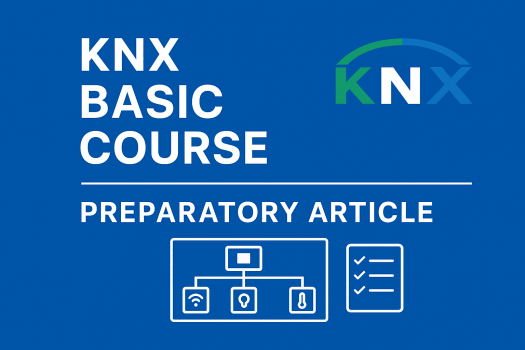KNX Basic Exam Simulation
Introduction
This article is an organized preparatory guide for the KNX Basic course to help learners grasp core concepts and prepare for practical and theoretical assessments. Below is a concise summary for each chapter with direct practice/quiz forms labeled as requested.
Why learn KNX?
KNX is an open standard for building automation that delivers reliable control of lighting, heating, ventilation, shading, security, and more through a unified protocol. Mastering KNX fundamentals opens opportunities in designing, installing, and commissioning smart building systems.
Learning objectives
- Understand KNX system architecture and main components.
- Learn TP (Twisted Pair) topology and wiring best practices.
- Recognize bus devices and how to configure them.
- Prepare for practical/theoretical exams using structured practice forms.
Preparatory materials by chapter
Note: To get access, kindly reach out to: +201151988050 on WhatsApp: https://wa.me/+201151988050
Ch.1 System Arguments
Summary: Core system concepts, key terminology, and engineering reasons behind design choices in KNX projects.
Practice form: Ch.1 System Arguments
Ch.2 System Overview
Summary: A broad overview of system components (bus lines, power supply, interfaces, etc.) and how different functions interact within a KNX project.
Practice form: Ch.2 System Overview
Ch.3 TP Topology
Summary: Design and topology of TP (Twisted Pair) lines, practical rules for line distribution, group addressing strategy, and maintaining network integrity.
Practice form: Ch.3 TP Topology
Ch.4 Bus Devices
Summary: Review of bus device types (sensors, actuators, interfaces), configuration methods, and integrating devices using ETS or other programming tools.
Practice form: Ch.4 Bus Devices
Ch.5 TP Installation
Summary: Practical installation guidelines for TP wiring, connectors, shielding/grounding where applicable, continuity and line resistance testing, and on‑site best practices to ensure a robust KNX TP installation.
Practice form: Ch.5 TP Installation
Ch.6 ETS Basic
Summary: Introduction to ETS basics: project creation, importing device catalogs, assigning physical addresses, and basic group addressing via ETS.
Practice form: Ch.6 ETS Basic
Ch.7 ETS Commissioning
Summary: ETS commissioning procedures: finalizing parameter settings, downloading to devices, diagnostics, logging, and steps for commissioning a KNX project on site.
Practice form: Ch.7 ETS Commissioning
Final Exam Samples
Practical tips for success
- Use ETS (even the demo/educational version) to practice device configuration.
- Design a simple project (room with lighting, blinds, motion sensor) and apply group addressing and device parameters.
- Share practice results with peers and discuss unclear points.
Additional recommended resources
- Official KNX documentation for deeper technical details.
- KNX forums and professional communities for practical advice and troubleshooting.
To Request Access:
- Feel free to contact us on whatsapp: +966593733440
Conclusion
The practice forms linked to each chapter will help you self-evaluate and reinforce your understanding before practical assignments or exams.

